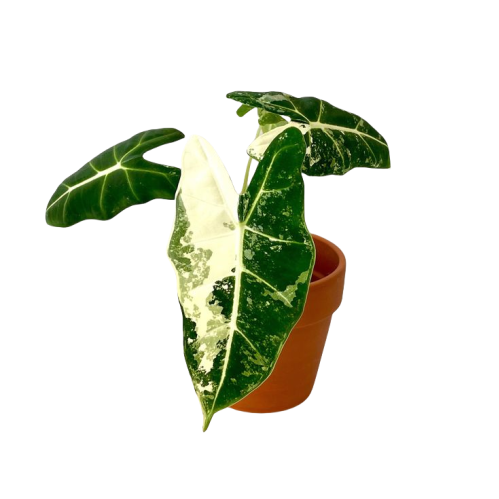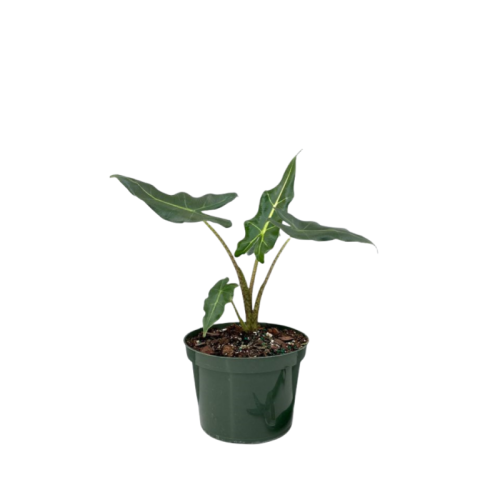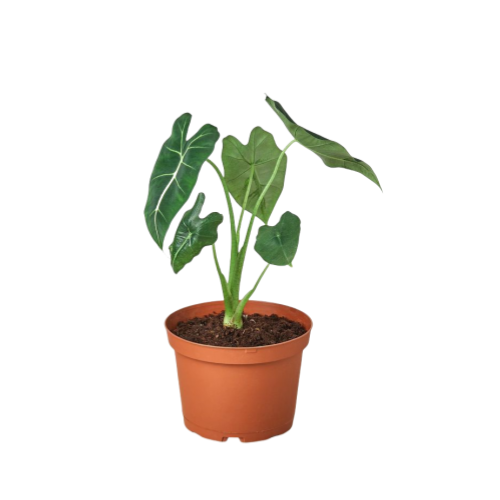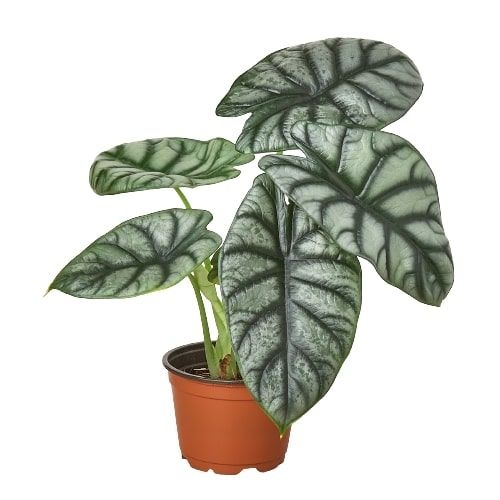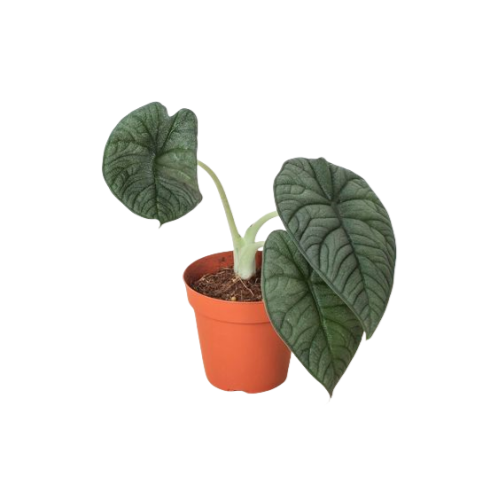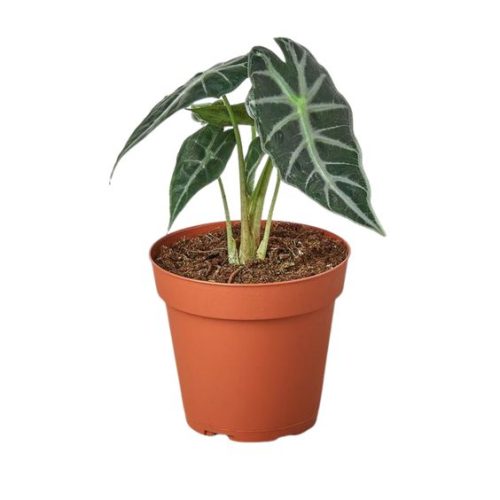Alocasia Smingray
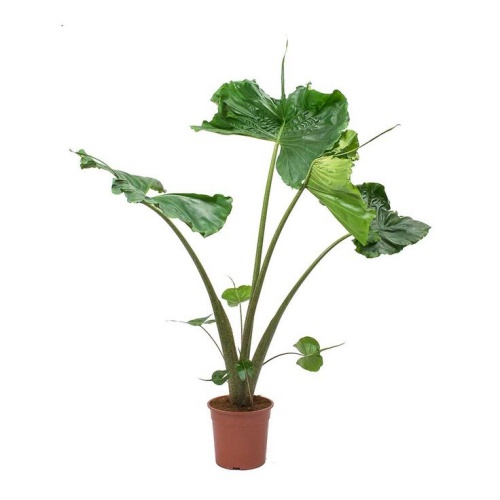
- Botanical Name: Alocasia macrorrhiza ‘Stingray’
- Family Name: Alaralae
- Zimayambira: 10-30 inches
- Kutentha: 10-28°C
- Others: Dappled light, high humidity, and moist soil
Kulemeletsa
Mafotokozedwe Akatundu
Alocasia Stteraray: Chipembedzo chachikulu cha dziko lobiriwira
Roots of the Rambler – Alocasia Stingray’s Tropical Origins
Alocasia Smingray, a member of the Araceae family, originates from the lush tropical regions of South America. This plant has captured the hearts of botanists and plant enthusiasts worldwide with its distinctive leaf shape and elegant presence. The Alocasia Stingray’s natural habitat is characterized by warm temperatures and high humidity, conditions it thrives in when grown outside its native region. This fern-like plant is not just a pretty face; its large, sculptural leaves provide a dramatic accent in any garden or interior space.
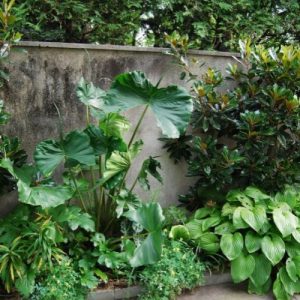
Alocasia Smingray
Zokonda zokonda za nthito
Monga chinyezi choona cha chinyezi, mawonekedwe a alcalias pamafunika malo omwe amalozera masamba amtundu wakwawo otentha. Imakula bwino pansi padzuwa, yomwe imalola masamba ake akuluakulu kukhala photosyssitezere moyenera popanda chiopsezo chowopsa. Mlingo wabwino wa chomera pamtengowu uli mbali yayikulu, kuyambira 50% mpaka 80%, yomwe imathandizira kusunga masamba ake akuluakulu. Kutentha, kusokonekera kwa alcacasia kumakonda kukhalabe pabwino, ndikupulumuka kochepa kwa 10 ° C mpaka 28 ° C mpaka 28 ° C.
The Stingray Silhouette – Morphological Marvels
The Alocasia Stingray’s most striking feature is its unique leaf shape, which has earned it the name. Its leaves start with a narrow base and extend into a long, pointed tip, much like the wings of a stingray. The broad, trailing lobes that follow the central leaf stalk further the resemblance to the marine creature. The petioles, or leaf stems, display striking brownish patterns that add to the visual appeal of this plant. Capable of growing over 100 centimeters tall, the Alocasia Stingray commands attention in any setting, whether as a statement piece indoors or a tropical accent outdoors.
The Versatile Vegetative Vixen – Adaptable and Enchanting
Chomera cha alcasas ndi chomera chosintha chomwe chimayenda bwino ngati mawonekedwe amkati kapena ngati gawo la malo akunja ofunda. Imawonjezera kusokonekera, kotentha kumawoneka ngati mabedi, malire, ndi minda yamatabwa, ndikupangitsa kuti kukhala wokondedwa kwa iwo omwe akufuna mawonekedwe apadera ndi mtengo wokongoletsera. Chomera sichimangongokhudza; Zimathandizanso kuti mpweya uyeretse, umawonjezera mphamvu za malo okhala ndi zosefera zake. Matumba a alcasasia ndi gawo lamoyo lomwe limabweretsa kukodza kwa malo obiriwira ku ngodya iliyonse.
Luso la Alcasia Ding Scingray
Kulera thanzi ndi chinyezi ndi kuwala
Kuti musunge zanu Alocasia Smingray‘s leaves from yellowing, create an environment that mimics its tropical origins. Maintain a humid atmosphere by misting, using a humidifier, or placing water dishes around the plant. Ensure it receives bright, indirect light to support photosynthesis without scorching the leaves. Avoid letting the plant sit in soggy soil, which can lead to root rot and yellowing leaves. Water when the top few centimeters of soil begin to dry, and consider using a well-draining soil mix to prevent waterlogged conditions.
Kuwongolera kutentha ndi michere
Alcasia nkhawa zimakula bwino m'malo okhazikika ndi kutentha pakati pa 18 ° C mpaka 28 ° C. Kusintha kwadzidzidzi kumatha kutsindika mbewuyo, kumabweretsa masamba achikasu. Gwiritsani ntchito kuyimba kwa thermometer kuti isunge ma tabu pachilengedwe. Pankhani yodyetsa, feteleza wamadzi, osungunuka madzi osungunuka amawagwiritsa ntchito mozama pakukula nthawi yakukula idzathandizira kukula kwa vumbwe popanda chiopsezo chopambana. Kuphatikiza apo, musamayang'ane tizirombo, chifukwa zimatha kuyambitsa zowonongeka. Nthawi zonse muziyang'ana mbewuyo, ndikuthana ndi vuto lililonse kuti lizikhala ndi thanzi labwino.





